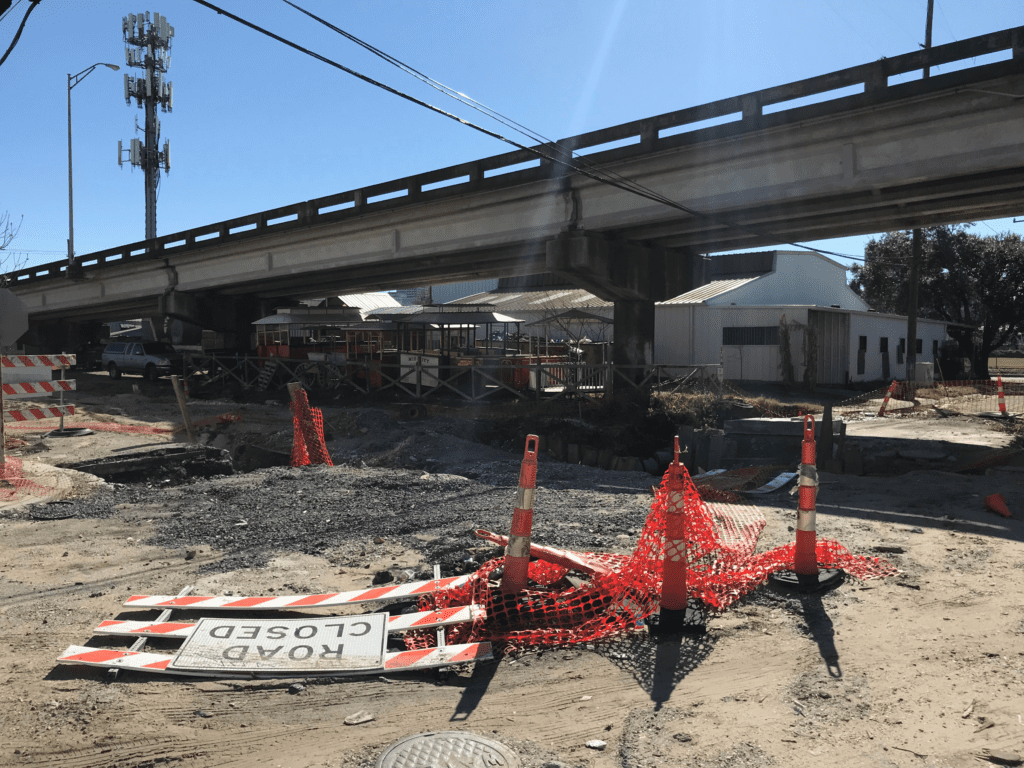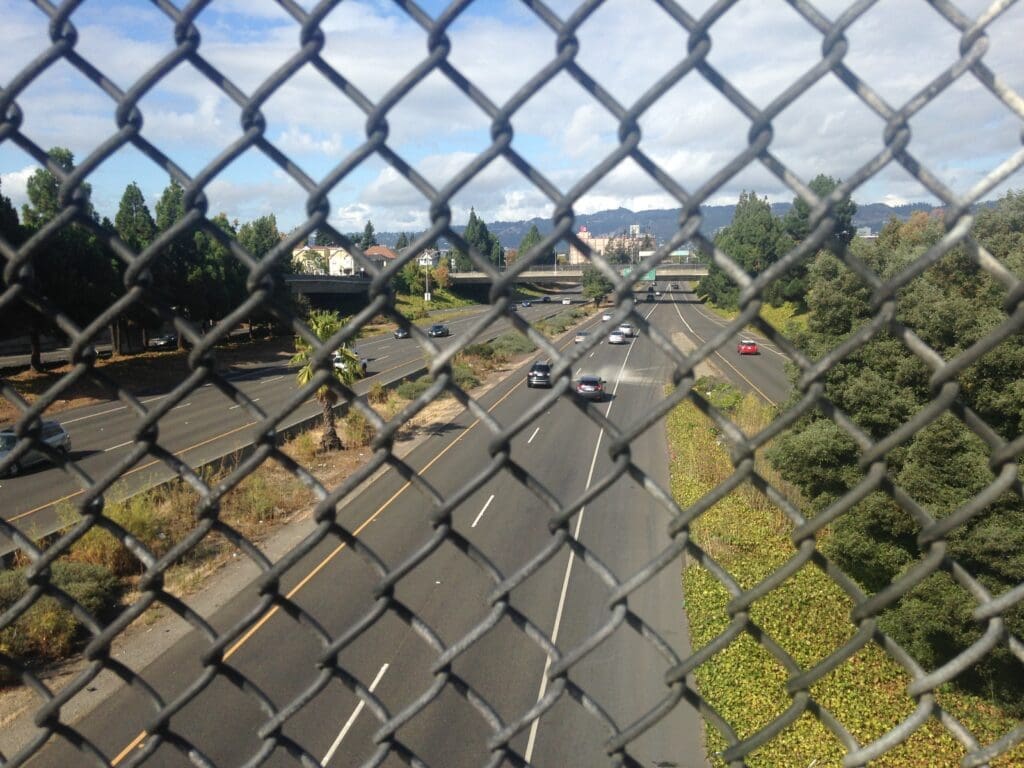Reconnecting Communities Program Indicators Want for Change


By Ben Crowther
The newest spherical of Reconnecting Communities and Neighborhoods Grant Program (RCN) awards introduced final week underscores the necessity for a transformational infrastructure invoice that places communities earlier than highways. There are a number of transformative tasks amongst this yr’s recipients, however the majority are smaller fixes and few deal instantly with the foundation reason behind disconnection: highways and large roads.
This yr, the quantity of funding out there for the Reconnecting Communities and Neighborhoods Grant Program was bolstered by the Neighborhood Entry and Fairness Grants (a program of the Inflation Discount Act), to a complete quantity of $3.3b.
USDOT made the choice to allocate the entire Neighborhood Entry and Fairness Grants in a single go, so subsequent yr funding is again all the way down to 2022 ranges. This implies the vast majority of federal funding devoted to repairing the harms of earlier transportation planning, significantly these achieved to Black and brown communities and lower-income communities, has now gone out the door.
So in what needs to be a banner yr for reconnecting communities, do the picks handle historic injustices and construct new infrastructure that promotes walkability and multimodal entry for underserved communities?
Transformative: Initiatives that Push the Envelope (~$610m)
On the high of the heap are the tasks that handle the guts of the issue: huge roads and unhealthy transit.
Daring, transformative tasks like Syracuse’s alternative of I-81 with a Neighborhood Grid or New Rochelle’s conversion of Memorial Freeway right into a linear park are what RCN candidates ought to aspire to. A number of of the planning grant awards, like Reconnecting MacArthur Park, the Nationwide Metropolis/Southeast San Diego Greenspace Hall Mission, and Convey Again sixth, have an analogous focus, with an emphasis on connecting underserved communities to providers, facilities, and inexperienced house. Hopefully these plans translate into future capital development awards.
Bus speedy transit additionally had a day. 4 bus speedy transit tasks (Los Angeles, Buffalo, Columbus, and Tukwila) introduced dwelling a complete of $353m. Giving buses devoted lanes and improved stops and stations is an effective way to make an inexpensive type of transit extra dependable.
Lastly, a sidewalk challenge. However not simply any sidewalk challenge. The Metropolis of Houston obtained $43m (!!!) to put money into sidewalks, drainage, and tree cowl in two of the town’s most economically deprived communities, the place sidewalk protection is sparse or non-existent. Think about if all sidewalk tasks have been funded at this degree.
Nuts-and-Bolts: Essential Avenue Fixes (~$1.4b)
Subsequent up, the smaller scale, nuts-and-bolts tasks that make up the vast majority of the awards. These embrace full streets tasks, multimodal enhancements, visitors calming measures, bike/ped paths and trails, the rerouting of heavy vans exterior neighborhoods, and extra open-ended research to determine what to do with divisive infrastructure like roads and rail. These tasks are all much-needed enhancements for his or her respective communities, however in some circumstances work round dividing infrastructure fairly than take care of it instantly.
Freeway Mitigation: Automobile Infrastructure by One other Title? (~$590m)
Most elaborate “pedestrian” infrastructure is admittedly automobile infrastructure, as Joe Cortright at Metropolis Observatory notes. This freeway mitigation class consists of that kind of pedestrian infrastructure: freeway caps ($410m), bike/ped bridges and underpasses ($117m), and parks/districts beneath highways ($62m). The development of all these relies on the street’s continued existence and so they’re normally constructed to maintain driver comfort, not pedestrian enjoyment.
Of those three subcategories, freeway caps have essentially the most potential to be transformative, in the event that they cowl a good portion of the freeway and are tied to bigger reparative efforts. All three varieties of mitigations could be helpful in restoring connections, however on the finish of the day, communities residing close to these highways are nonetheless topic to the air pollution, harmful driving, and disinvestment that comes with a giant street.
Problematic: Freeway Mitigation within the Context of Growth (~$675m)

Our final class is a small subset of 4 tasks that suggest mitigations for deliberate freeway expansions, or within the case of Denver, a freeway enlargement accomplished in July 2023. Nevertheless, USDOT awarded these 4 tasks an outsized quantity of funding: 20% of the overall quantity out there.
When Secretary Buttigieg launched the Reconnecting Communities program in 2022, he described it as “the first-ever devoted federal initiative to unify neighborhoods residing with the impacts of previous infrastructure selections that divided them.” RCN awards to the I-5 Rose Quarter Enchancment Mission, the 400 East and 900 South Interstate Crossings Mission, Our Future 35, the Reunited Denver Mission Globeville Elyria-Swansea allow present infrastructure choices that broaden and perpetuate the divide highways trigger.
Mixed, these 4 tasks push a whole bunch out of their properties, companies, daycares, and faculties. The state DOTs concerned have made it clear that enlargement is their first precedence and reconnecting communities an afterthought. They eye RCN grant cash as leverage to unlock freeway enlargement cash.
By granting awards like these, USDOT rewards the unhealthy habits of state departments of transportation and units an unwelcome precedent: state DOTs don’t want to significantly contemplate mitigations in their very own tasks, as a result of the RCN program will bail them out.
It’s unlucky to see the restricted funding of the RCN program put to this use, particularly when a lot different cash that would fund freeway mitigations is on the market within the different packages of the IIJA. Luckily, {dollars} from the RCN program can’t be spent instantly on increasing the freeway, so there’s nonetheless the chance for state DOTs to stroll away from the freeway expansions and simply construct the caps, bridges, and underpasses. We strongly urge recipients and their companions to rethink their plans for enlargement and as an alternative put money into actually reconnecting communities.
Ultimate Takeaways
About 38% of the $3.3 billion awarded this yr went to freeway mitigation tasks. Certain, that’s lower than half the out there funding, nevertheless it nonetheless means a good portion of what ought to have been a transformative program has gone towards a business-as-usual strategy. With the vast majority of its cash now out the door, it’s protected to say that the RCN program moved the needle simply barely. To be truthful, USDOT can solely award tasks that have been submitted, so an absence of imaginative and prescient from state DOTs and their companions bears accountability as effectively. The complete system is in want of reform and one small program alone isn’t going to get it there.
The announcement of the RCN grants additionally comes on the heels of an evaluation by Transportation for America that exhibits thus far practically 25% of IIJA funding spent (over $33 billion) has gone towards freeway expansions. This strategy to spending the record-setting funding within the IIJA threatens the nation’s fairness, local weather and budgetary objectives, at a time when transportation is the most important supply of emissions in the US. Numerous freeway expansions funded by the IIJA are being constructed with none remediations in any respect, inflicting new injury at a fee a lot, a lot quicker than the RCN program can restore it.
That is why the Communities Over Highways coalition, led by America Walks and over 200 organizations robust nationwide, is asking for a moratorium on freeway enlargement, to make sure communities have the sources to put money into street upkeep, safer streets, dependable public transportation, and reconnecting communities. Till we overhaul our transportation system to redirect the vast majority of funding into community-oriented infrastructure investments, we are going to maintain failing to satisfy our fairness, local weather, and upkeep objectives.